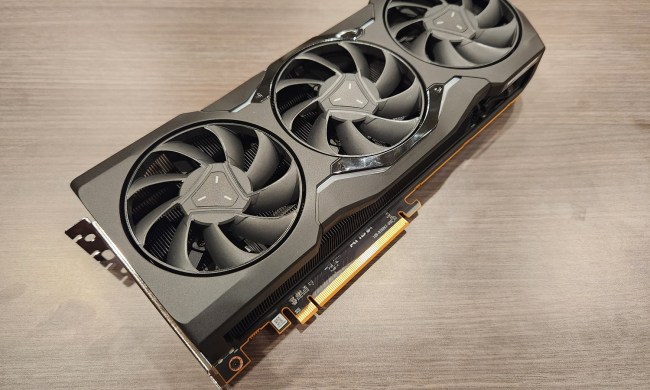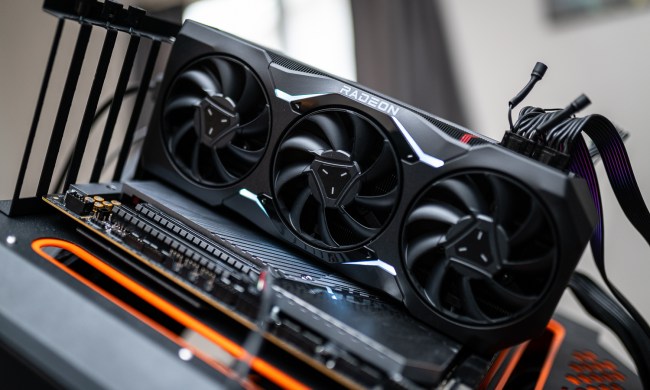
AMD’s new RX 7600 XT graphics card isn’t off to a great start, at least according to sales data shared by 3DCenter. The new video card launched on Wednesday alongside Nvidia’s RTX 4070 Ti Super, and even with a relatively poor reception, Nvidia sold nearly 10 times as many graphics cards as AMD did in a sampling at a German retailer.
There are a few caveats to that, however. 3DCenter takes data for the number of sales from Mindfactory, a German hardware retailer, 12 to 14 hours after release. According to the data, weaker GPUs like the RTX 4060 and RX 7600 sell considerably less than more powerful GPUs like the RTX 4070 Super and RX 7800 XT. It indicates some bias in this data, perhaps showing that this retailer caters to a crowd willing to spend more money on a graphics card.
Nvidia typically leads AMD in overall sales, but that’s not exactly what we see play out here. According to the data, AMD’s RX 7800 XT sold around 400 units in the short window after release, and that’s one of the best-reviewed graphics cards of the year (read our RX 7800 XT review). By comparison, Nvidia’s competing RTX 4070 sold just over 300 units.
Although this data is just from one retailer and shows some clear leanings toward higher-end GPUs, it would make sense if the RX 7600 XT isn’t selling well. As you can read in our RX 7600 XT review, the card barely moves the performance needle compared to the base RX 7600, and it comes with a 22% price hike.

The biggest claim to fame for the GPU is 16GB of VRAM, which is unheard of for a graphics card that costs $330. Unfortunately, that extra VRAM only makes a difference in a small subset of games like The Last of Us Part One, which hog an unnecessary amount of VRAM. In many titles, the RX 7600 XT offers identical performance to the RX 7600, which makes sense considering both graphics cards hold identical core counts.
As for Nvidia, the Mindfactory data shows the RTX 4070 Ti Super selling considerably less than the base RTX 4070 Ti, moving around 30% fewer units. This is likely due to the awkward position of this GPU compared to Nvidia’s upcoming RTX 4080 Super, which you can read about in our RTX 4070 Ti Super review.
The latest batch of graphics cards from AMD and Nvidia is an attempt to improve the designs we saw over the past year, fixing either specs or pricing issues. That could explain why we’re seeing lower sales overall — after all, PC gamers who wanted to upgrade this generation have likely already picked up a graphics card.



